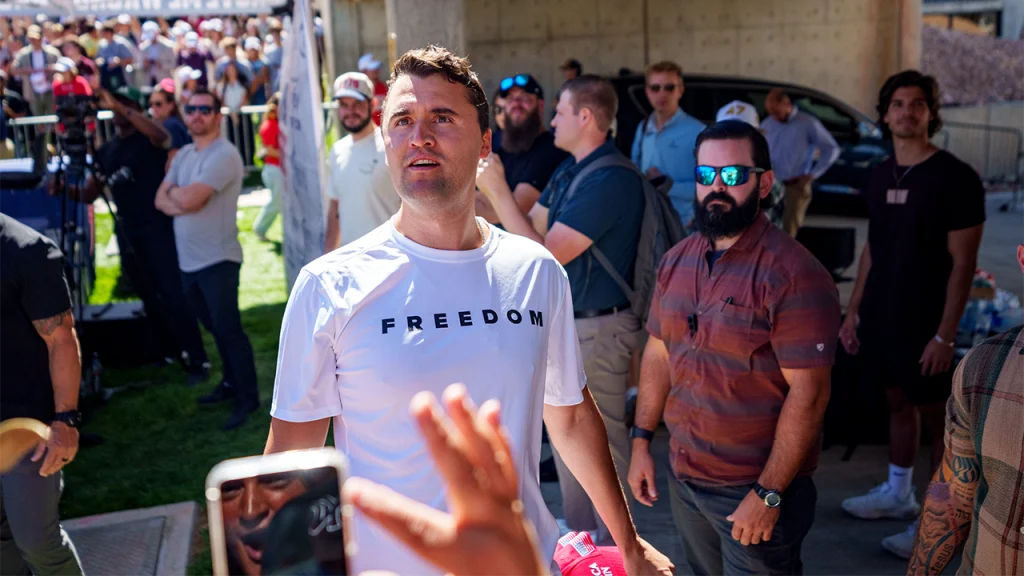The Hunt for Charlie Kirk’s Alleged Assassin: Tyler Robinson’s Movements and Evidence
Tyler Robinson’s calculated movements and evidence trail leading up to and following the assassination of conservative activist Charlie Kirk at Utah Valley University on September 10 reveals a methodical approach that investigators have now pieced together. Using campus security cameras, physical evidence, and digital communications, authorities have constructed a timeline showing how Robinson allegedly scouted the location hours before returning to carry out the shooting that killed the Turning Point USA founder. The investigation shows how even the most carefully planned crimes often leave behind crucial evidence that leads back to the perpetrator.
According to law enforcement sources and court documents, Robinson’s day began when he arrived on campus wearing black clothing around 11:51 a.m., entering through a tunnel under Campus Drive after parking his gray Dodge Challenger nearby. He walked past the Utah Valley Institute of Religion toward the Losee Center, which would later become the focal point of his alleged attack. Campus security cameras captured these movements, allowing investigators to reconstruct his path without relying on cell phone records. This initial visit appears to have been a reconnaissance mission, as Robinson would later return in different clothes and armed with what prosecutors describe as a .30-06 Mauser rifle—the suspected murder weapon that would end the life of the married father of two.
The shooting itself occurred around 12:20 p.m., when Robinson allegedly positioned himself on the rooftop above the Losee Center as a sniper’s perch and fired a single shot that struck Kirk in the neck. The evidence left behind at this location proved crucial for investigators—campus police found marks in the gravel rooftop “consistent with a sniper having lain there,” including impressions potentially left by elbows, knees, and feet of someone in a prone shooting position. Muddy Converse footprints were also discovered along the expected escape route, matching footwear visible in surveillance images previously released by the FBI. As panic erupted in the crowd below, Robinson reportedly ran north across the rooftop, dropped to ground level, and sprinted across Campus Drive, narrowly avoiding being hit by a passing van before disappearing from the immediate area.
The rifle—a critical piece of evidence—was found wrapped in a towel and hidden in a small wooded area just feet from where Robinson is believed to have crossed the street. This weapon would later yield important DNA evidence linking Robinson to the crime. What’s particularly notable is that hours after the shooting, Robinson allegedly encountered a police officer who was standing watch over the perimeter. According to law enforcement sources, Robinson told the officer he needed to retrieve something from near the garage—a claim that didn’t raise suspicions at the time since hundreds of people had fled in panic and left belongings behind. However, the officer’s routine check of Robinson’s license plate later proved significant when investigators identified him as a suspect, placing him at the scene beyond the initial shooting.
Text messages between Robinson and his roommate Lance Twiggs (who is cooperating with authorities and has not been charged) provided investigators with additional evidence of Robinson’s alleged involvement. In messages exchanged the evening of the shooting, Robinson reportedly told Twiggs to “look under my keyboard,” where a note was found reading, “I had the opportunity to take out Charlie Kirk, and I’m going to take it.” The messages revealed Robinson’s apparent admission to the crime, with texts stating “I am, I’m sorry” when Twiggs asked if he was responsible. Robinson also described being “stuck in Orem” and needing to “grab my rifle still,” explaining that “there is a squad car parked right by it” and expressing concern about retrieving what he referred to as “grandpa’s rifle.” These communications documented Robinson’s alleged attempts to recover the weapon while evading detection in the hours following the shooting.
The investigation culminated with forensic evidence linking Robinson directly to the crime. Prosecutors sent the recovered rifle to a crime lab for testing and reportedly found DNA consistent with Robinson’s on the gun itself, on the towel it was wrapped in, and on three of the four rounds inside. This physical evidence, combined with the digital trail, witness encounters, and surveillance footage, has led to Robinson facing charges including aggravated murder—which carries the potential death penalty if convicted—along with felony discharge of a firearm, witness tampering, and obstruction. The case illustrates how modern investigations combine traditional detective work with technological evidence to reconstruct events surrounding high-profile crimes, leaving alleged perpetrators with fewer places to hide despite careful planning or attempts to cover their tracks.


